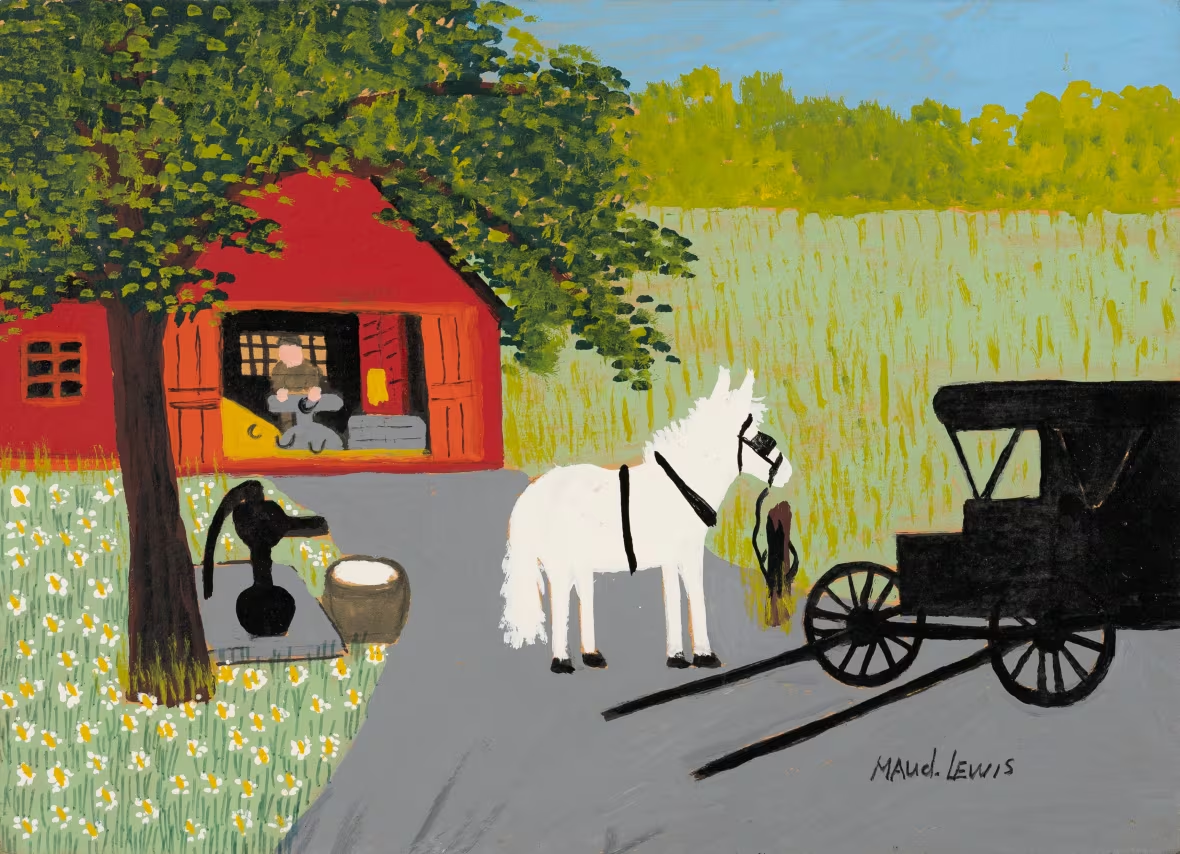Maud or fraud? How lab testing is helping to authenticate work by Maud Lewis
Lewis fakes have been popping up in the marketplace

It all started with minuscule chips of paint that travelled from Saint John to Fredericton to be burned, acidified and tested — all in search of one answer: do they have lead?
But these weren't any normal paint samples taken from a peeling ceiling or wall of an old home.
They came from two paintings created by the legendary Nova Scotia artist Maud Lewis.
Or, perhaps they weren't. To confirm that the paintings were genuine and not a forgery, the chips were put to the test.
Despite each paint chip's significance, as it went through the lab, the scientists were unaware of the sample's origin, no matter how interesting it might be.
"Almost never do we actually know the story behind anything that we're actually testing unless the customer has reached out to us directly," said Matthew Norman, the interim director of the inorganic analytical services division at the Research and Productivity Council in Fredericton.

He led the testing on the Maud Lewis paint chips, but was none the wiser of where they came from.
During the testing, Norman doesn't even see the client's name because once it's in the system, a number is assigned to it.
Norman said sometimes a sample will come back as having a high lead content, which will pique his curiosity, sometimes making him wonder where it's from. But rarely does he find out.
"Every once in a while you do hear good stories about a lighthouse or a painting that you get to be involved with."
And that's the case for these particular samples.
Backing up an authentication
They came from the Jones Auction House in Saint John, which recently had two Maud Lewis paintings come into their possession.
And while Sarah Jones, co-founder and curator for the house, is an art historian with particular expertise in Maud Lewis paintings, she wanted multiple sources to back up her authentication.

She said when an artist is no longer alive and there's no designated person with the estate, such as a child of the artist, to verify the work, other steps need to be taken.
Jones said this includes a series of examinations and tests taking into account different perspectives.
"One thing alone kind of doesn't rubber-stamp it as authentic," she said. "It's kind of the combination of all of these perspectives, all these examinations, all of these tests, that then together we can answer the question: does this work align with what we would expect of a Maud Lewis artwork?"
Along with her own examination of the painting, she also sought another Maud Lewis expert in Nova Scotia for his opinion.
There have been some fraudulent Maud Lewis paintings showing up in the marketplace, said Jones, which means institutions, like auction houses, need to have a rigorous authentication process in place.

Three of the fakes even duped the Nova Scotia government. The province purchased the works in 1982, but only recently received confirmation that they were fakes.
Extra steps
With some Maud Lewis paintings selling for more than $100,000, Jones said taking extra authentication steps helps to increase buyer confidence.
Which is why the auction house added another step to the process after receiving the Maud Lewis artworks this year: a pigment analysis.

Jones said Maud Lewis often used house paint for her artwork.
Lewis died in 1970. Up until the 1980s, Jones said, house paint often had lead in it.
So Jones collected the samples from the paint drippings on the side of the painting and they went off to the lab, where Norman and his team began.
They take an extremely small paint sample, weigh it out, put it in an over-500 C furnace to burn off any drywall or back materials, put it through an acid digestion using nitric acid and heat, and then run it through a special spectrometer to see how much lead is in the sample.

Jones said in this case, the lab confirmed there was lead in the paint. While she said getting that result isn't necessarily conclusive, combined with the other authentication methods, the auction house was confident that the Maud Lewis paintings were real.
She said the auction house hopes to add another scientific authentication step in the future using infrared technology to see the underdrawing beneath the paint.
"It's important that we… treat this work with the same kind of respect and due diligence that we would treat a work by one of the Group of Seven or by, you know, a serious European artist," said Jones. "So, that's what we're trying to do."



